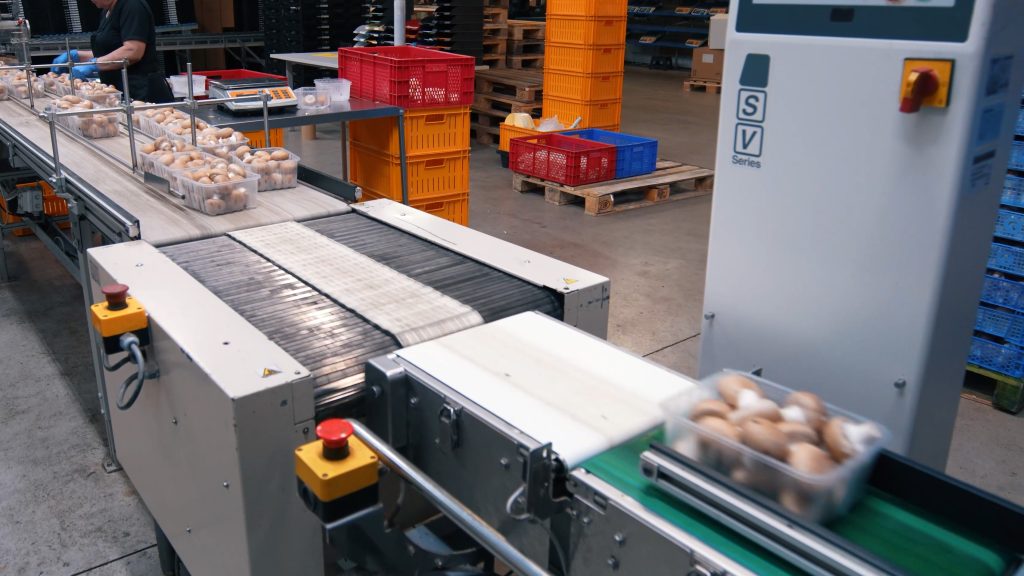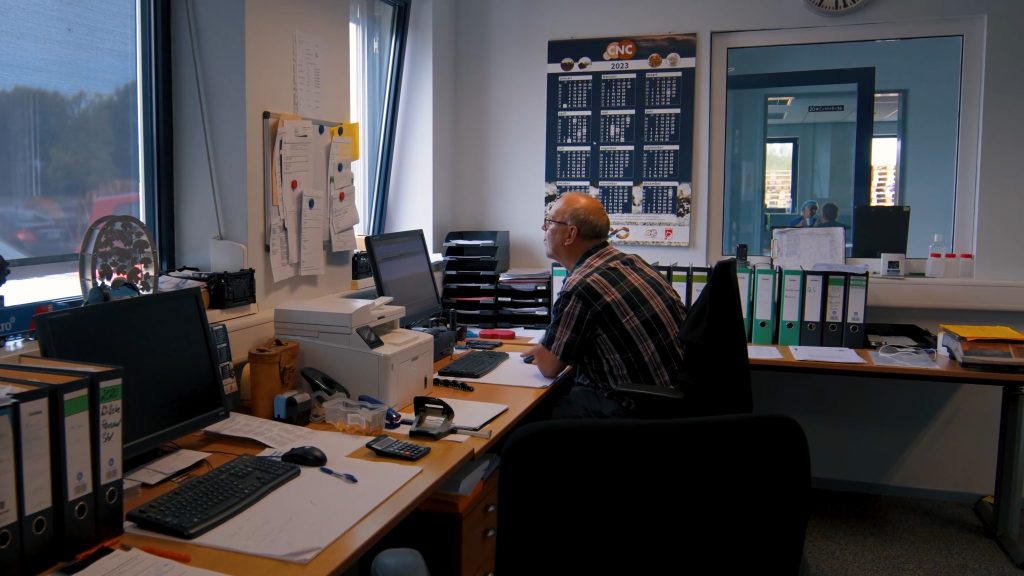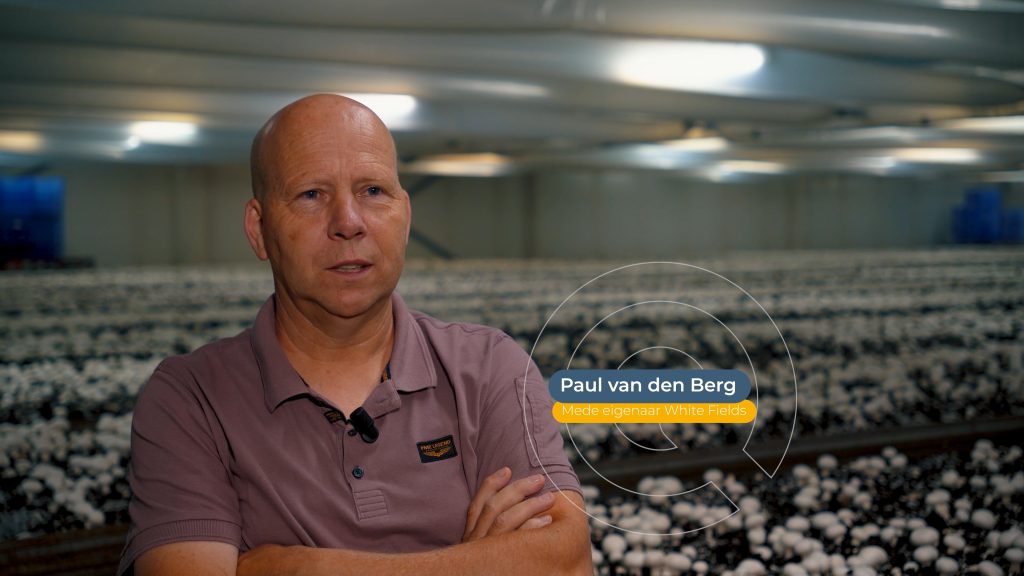
White Fields, producer and partial packer of white and brown mushrooms, has experienced unprecedented growth in recent years. As a result, their methods were no longer adequate. To support planned growth and continue to meet the demands of their customers, they chose S/4HANA Public Cloud. In just 3 months, we implemented this at White Fields.
Jan Tielemans, project manager from Quinso, and Paul van de Berg, co-owner at White Fields, will take you through the course of the project and tell you what the first results are.
October: setting up the new system
During the first phase of implementing S/4HANA Cloud, the systems are set up. White Fields was working with office applications for their administrative processes. For the planned growth, it is important that this is digitized by integrated software. Of course, as an organization, you do not want processes to become more complex as a result. It is therefore important to limit digitization to the basic processes that absolutely must be digitized. Jan Tielemans explains, “In the first phase of the project, I am busy gaining insight into the basic processes. Which data specifically do I need to make the new system work?This also means making choices. Consultants often want to digitize more processes than is absolutely necessary for the customer.’
Jan has a great analogy: “It’s as if you, as a consultant, are your client’s hare during his first 5 km race. You know exactly how fast you can run and what pace you need to maintain to set your best time. But the client is doing this for the first time. If you keep running at your pace, the client will lose sight of you. Therefore, it is important to always keep in mind that the people who will be working with the new system do not have the underlying knowledge and experience that you do. By digitizing only the basic processes at White Fields for now, in this case digitizing inventory management and lot registration, we are taking the employees with us in the transition.

November – training the users
The month of November marked an essential phase in the implementation of S/4HANA Cloud at White Fields: training the employees who will be using S/4HANA.
After setting up the basic process systems in October, users could now gain practical experience in managing master data in S/4HANA. ‘In large projects, we always offer the users of the new system a training program. This often feels like a ‘must do’ to them, even though it is one of the most important aspects of the project,’ says Jan.
‘The White Fields organization decided to start up a small portion of the processes in the production environment as early as November. This allowed some of the training to actually be conducted on the job. Users will receive training and support in performing this work in the production environment. This ensures that the trained for users is also immediately very recognizable. And we receive immediate feedback on what could practically work better in the new system,” Jan continued. ‘For the users, it is an advantage to work from practice, because this does not bring work to a standstill.’
“Because we wanted to implement quickly, in addition to training the users, November as a whole was a challenge,” explains Jan, “Because we didn’t want to shut down the production process and the associated administrative tasks, we ran into problems we hadn’t thought of initially. For example, it proved more cumbersome to translate the existing calculation schemes used by White Fields into the chart of accounts in S/4HANA. An invoice consists of several components. These components are all indicated by a number, such as raw material costs. White Fields works with an outside accounting firm for invoicing. So they also played a role in converting this. That created an additional communication channel that we didn’t consider beforehand. So all in all, this took more time than we expected.’

December – getting the system ready for production
Then, in December, the processes were tested and master data was entered into the production system. Often in an implementation project, much time is spent testing and training the users. In this project, the strategic choice was made to spend a little less time on these activities and more time on hypercare after the go-live. The main advantage of this approach is that the system and operating procedures can be refined in practice together with the users, based on actual business processes.
Jan Tielemans: “I like to compare it to building a new house. You know what you want: the kitchen, the bathroom, the floors and the colors on the wall. But then the electrician asks where you want the electricity points. Globally, you know where they should be, but it’s not until the house is finished that you see where you need them. That one nice spot overlooking the garden, where you still want to put a desk, for example. If the electrician and the resident go through that process together, there is the greatest chance that the electricity points will be in the right place.’
‘So it is with setting up a new software system. As a consultant, you know what the system has to offer, what best practices work best. But you don’t know exactly how work is done within the organization. On the other hand, users are familiar with all the processes, but they don’t know in detail what capabilities S/4HANA’s best practices offer. So as a consultant or project manager, it is important to look with the user. By physically sitting next to them you can point out the convenience of the best practices ánd implement them immediately.
The biggest challenge during implementation
In late December, the new system went live for all three companies. The biggest challenge was not getting the users on board, but was primarily in creating standard forms to be used in production and delivery. Jan explains, “A go-live at a smaller organization is an intensive period. There are often fewer people working who actively use the administrative processes. But the set-up of the system and the processes there are no less than at a larger organization. Therefore, it requires a lot from the employees. With proper guidance, after four weeks they are able to use the system optimally within the organization. This shows that with limited effort the supply chain can be digitized from front to back. What is important is that there are enough employees who can challenge your approach as a consultant, who say, “If we can do this with the system, can’t that other process also be digitized?” Thanks to their knowledge of the administrative processes, you can make the S/4HANA system run optimally.
Opportunities for the future thanks to S/4HANA Cloud
Now that the system is live, White Fields sees even more opportunities for the future. Paul van den Berg, co-owner at White Fields, says, “We at White Fields now have much faster insight into both financial and logistical processes. In addition, we can now meet the digitization demand our customers are demanding. Supermarkets expect delivery via Electronic Data Interchange (EDI). Because we used to keep all our data in Office applications, we could only meet this demand by retyping everything. Now that all business information is standardized in the S/4HANA system, the margin of error is reduced and time and costs are saved. We will now build on this system by integrating the scanners, suppliers and transporters into the digital logistics process as well. Which will allow us to monitor the efficiency of the production process even better.’

Support planned growth like White Fields?
White Fields implemented SAP S/4HANA Public Cloud in 3 months, allowing them to meet their customers’ demand. Do you also want to support your organization’s planned growth? And thus future-proof your organization? S/4HANA Public Cloud is the right match for any organization. Not only for large organizations, but certainly also for SME Netherlands. These are precisely the organizations we guide in implementing S/4HANA Public Cloud and cashing in on the potential of this innovative software.
We are happy to identify for your organization which of the 850 best practices within S/4HANA fit your business processes. We do this with the Digital Discovery Assessment. Find out more about it here: